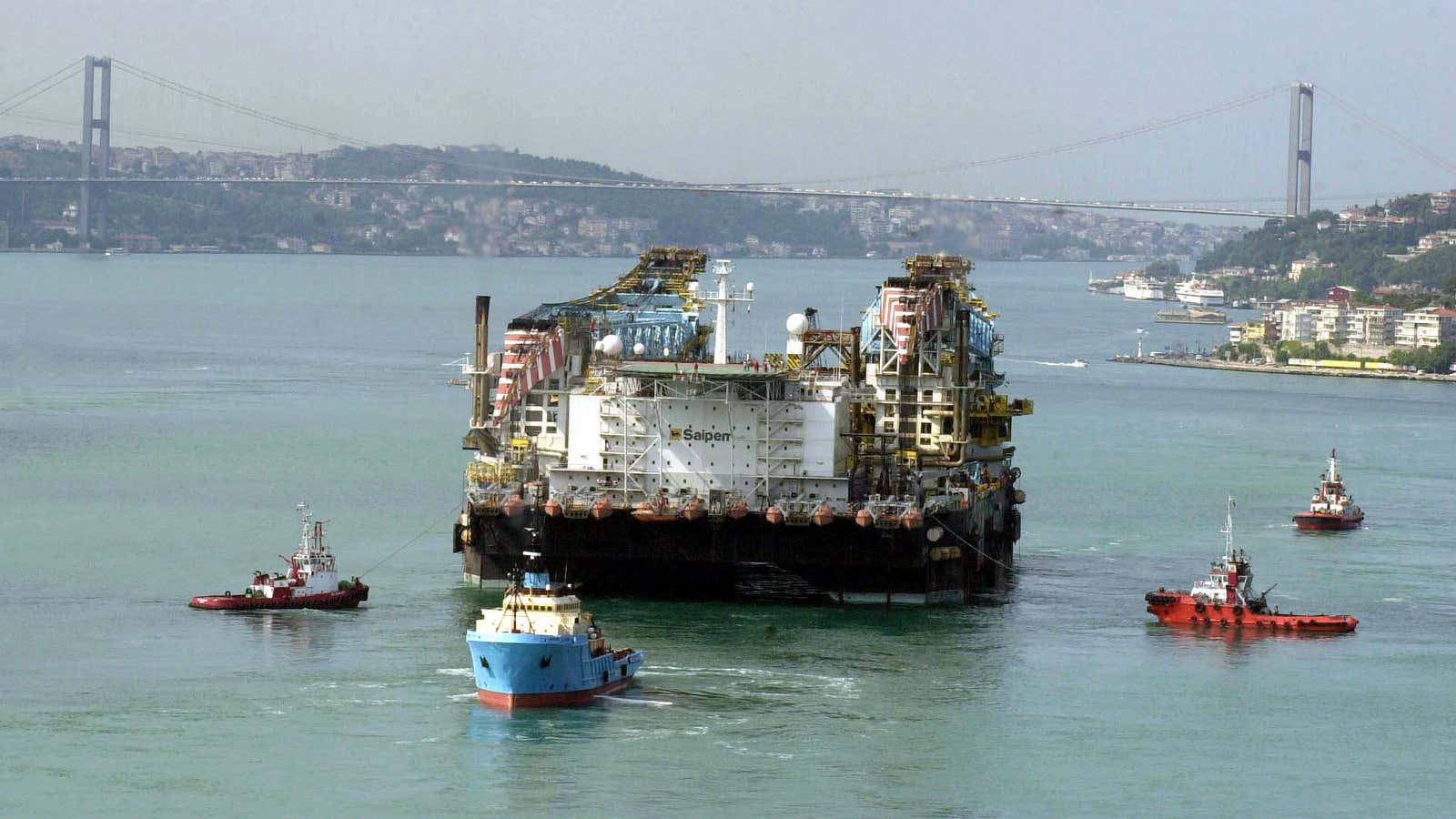Shares of Saipem, the Italian energy engineering firm controlled by Eni, fell 34.29% in trading Jan. 30 after the company slashed earnings estimates and its financial outlook in a warning to investors ahead of its mid-February earnings. The difference between analyst estimates and Saipem’s revised outlook was massive: the company expects to earn €750 million ($1.02 billion) in 2013, about half of what analysts were expecting for the year. The shock sent waves through other companies in the energy market: Saipem’s biggest competitor, the UK-based Petrofrac, saw its shares fall by 6.91% during trading, John Wood Group fell 2.19%, and shares of Amec fell 2.09%.
How were analysts so off-target? A number of them had advised clients to purchase more shares of the company (which trades as SPM.MI) until recently, even as company management went through a shake-up in December (Italian). A scandal focusing on corruption charges in Algeria led to the departures of multiple players at the very top of Saipem—CEO Pietro Franco Tali and Alessandro Bernini, ENI’s CFO and Saipem’s CEO until 2008. In December, a three-year investigation into Algerian oil giant Sonatrach (with which Saipem did business) finally led to their resignations, and could ultimately lead to more fees for the company.
The moves weren’t good for the oil company. As Credit Agricole research analyst Geoffrey Stern put it in December,
Such an unexpected announcement is clearly negative for Saipem as M. Tali, CEO since 2000, has been the key architect of Saipem’s very successful story. In addition, this is not coming at the right time as Saipem has to face some headwinds in both Offshore and Onshore [Engineering & Construction].
But the shake-up isn’t the only thing causing the company distress. Saipem simply has had trouble bringing home the bacon. “The guidance is for onshore profit down 80% [year-over-year] in 13E and for offshore profit down 70% [year-over-year],” Credit Suisse analyst Alex Brooks pointed out today. “The review speaks of lower activity in high margin pre-09 contracts, highly competitive market conditions 2009-11 in offshore and ’10 onwards in offshore, delays to major awards, and high levels of investment in Brazil.”
The market for new oil projects is highly competitive, with lots of companies looking for a piece of the pie. Positioning in the right markets, then, is crucial. In order to get an edge in Brazil—which Saipem sees as a key foothold given its absence in other growing markets—it’s had to shell out quite a bit of capital up front, particularly on a project that requires it to drill below a layer of salt under the Atlantic seabed.
Part of the problem is also that investors relied on Saipem to secure “mega-projects” that the company either didn’t win or will win with few profits. Barclays analysts reason:
What went wrong? That embedded profitability at Saipem in 2013F was lower than in recent years is hardly new news. The magnitude of it is. It now appears that the bulk of the backlog won over recent years has been sub optimal and, with the delay of the mega projects that Saipem was geared up to win, the spread of margins in its portfolio is wide. In essence, for the next few years there is no high-end project to carry the group, while the low end has moved lower, especially in the onshore where it fought tough competition and won on price.
Barclays explained that while it had already doubted that Saipem could live up to its projections and that the company would take a bunch of charges, their energy team believed that investors would see the long-term value of the company. Evidently not.
This is a bigger move if it continues to carry over to other energy services companies. Demand for energy isn’t increasing very quickly because the global economy is still moving slowly. And the abundance of natural gas resources discovered in the US changes the energy game, so it makes sense for oil companies to hold back and delay handing out contracts for new projects to Saipem and its peers.
